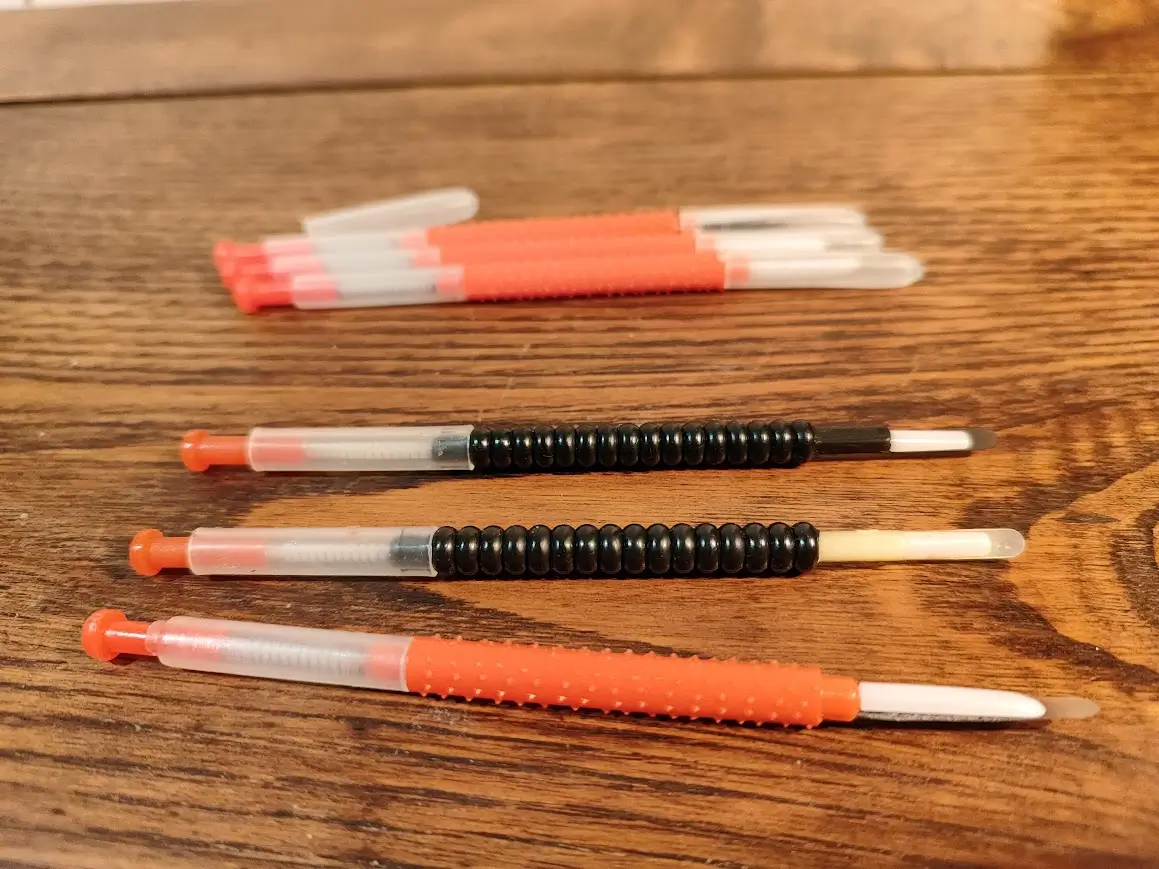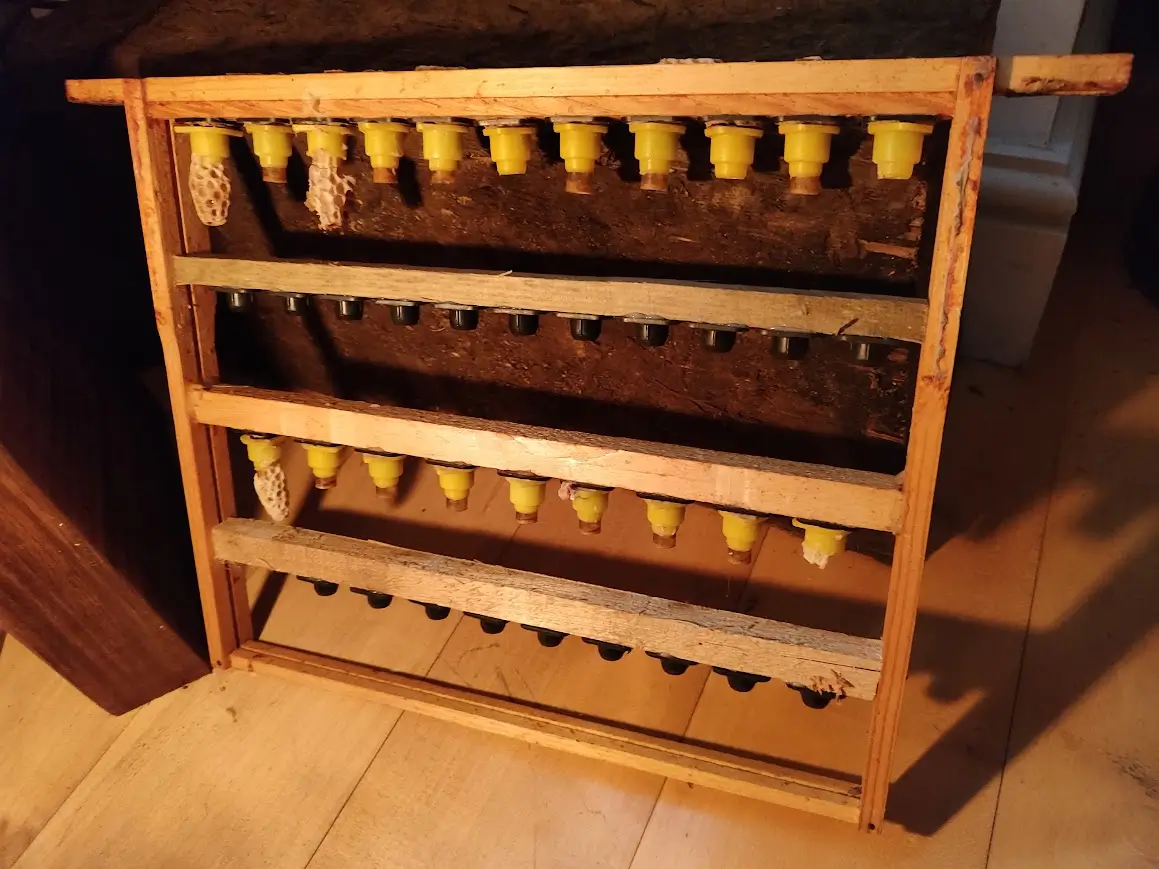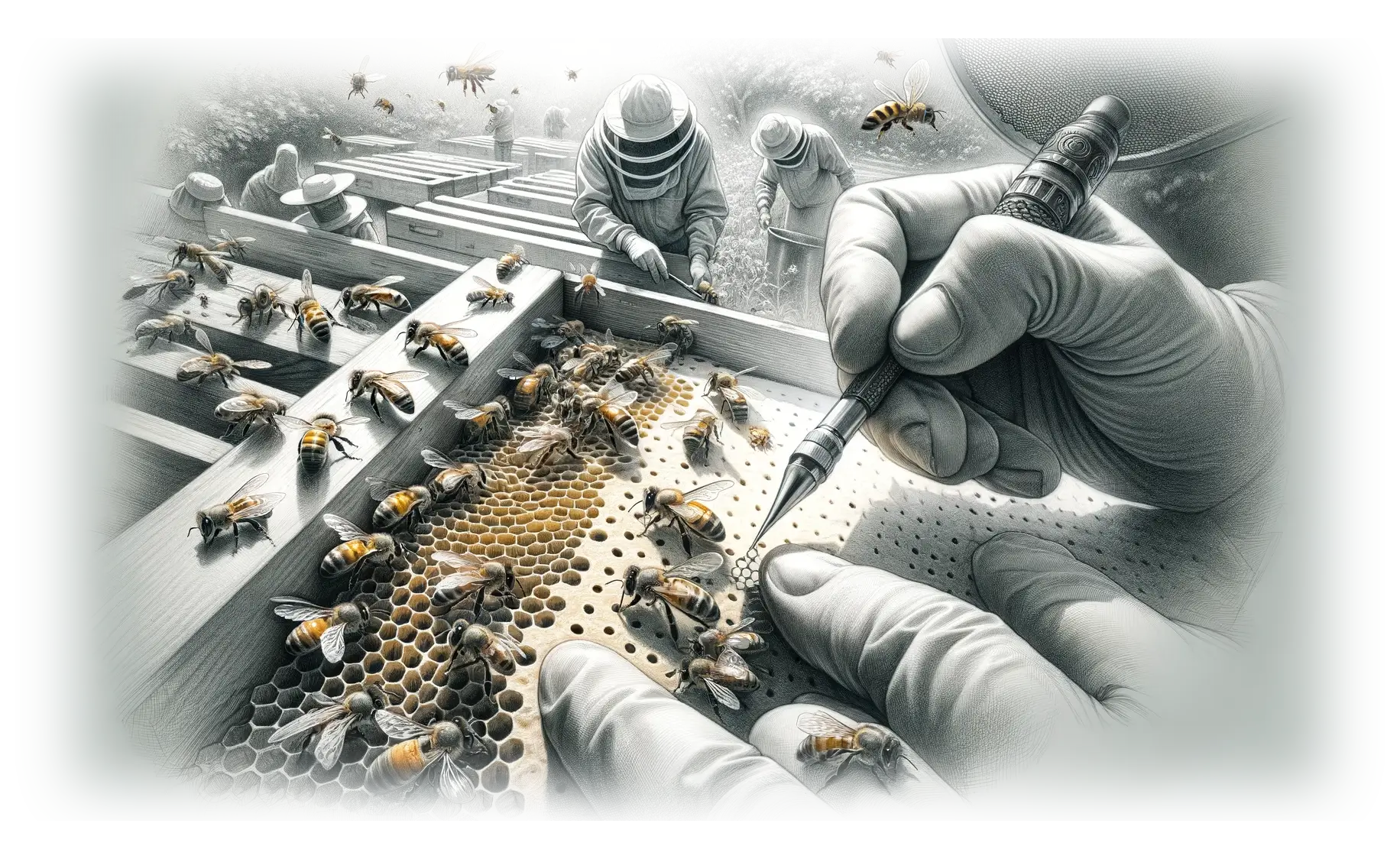Beekeeping > Queens > Grafting
Guide to Grafting
Grafting is a way to produce queen cells that you can then use to make up new nucs or replace aging queens. It's preferable to using swarm cells as you can choose the mother of the grafts for traits you prefer such as calmness, honey production, ability to defend themselves etc. They are also easier to use as each graft can be moved to a mating nuc without having to cut it out of a frame which can be hard (or impossible) to do without damaging the cell. Grafting looks hard/complicated if you haven't done it before but by following the basics you should be successful and have fun doing it.
Grafting Tools
The most common grafting tool is the "Chinese grafting tool", these can be bought for a couple pounds from most
beekeeping suppliers, eBay or AliExpress.
There are alternatives such as the JZ-BZ grafting tool and stainless steel style tools. I started with the Chinese grafting tool
and felt comfortable with it so haven't tried other style tools (yet).

A few of my Chinese grafting tools.
The Chinese grafting tool has a thin, long handle with a small, flexible, and slightly curved tip at one end. The tip is often made of plastic or bamboo and is designed to be gentle on the larvae. There is a small retractable tongue/tiny scoop at the tip which you can plunge down by pushing the top of the tool to transfer the larvae from the tool into a cell.
Prior To Grafting
You will need a colony for your grafts to go into. It will need to be 'hopelessly queenless' meaning that there is no queen in the hive and the bees have no way to raise their own queen from existing eggs or young larvae. If there are eggs or young larvae the bees will favour raising queen cells from these rather than your grafts.
To get a hive into that state you can remove the queen from an existing hive into a nuc along with a couple frames of bees then after 8 days remove any emergency queen cells. The colony you choose to raise the queens should be strong and have plenty of young bees. If you plan to do multiple rounds of grafts then you may want to approach this differently, Michael Palmer has written some helpful articles and there are several videos showing his methods.
Grafting Frame
I use the Nicot style cups/cage, they can be bought cheaply (about £3 or £4 from places like AliExpress, eBay or your local bee equipment supplier. I took a standard frame then added a couple extra cross sections allowing more for more cells, then glued the black cell bar holders to the frame with a hot glue gun.
The brown cell cups fit into the yellow cup holders, then once you have placed the larvae into the cup the yellow cup holder fits into the black bar holder.

A grafting frame made from a standard wooden frame.
Queen Mother Selection
You get to choose the colony to graft from so it's good to pick one with traits that you like.
Selecting Larvae To Graft
You need to select young larvae (ideally 12 to 24 hours old), any older and the success rate/quality of the queen may decrease. They are smaller than you'd think and photos sometimes make them look bigger than they actually are.
Grafting Timings
I've added a Grafting Calendar tool that will let you enter your grafting date then it will give you the dates at the various stages as well as a weather forecast.When To Move Grafts To Nucs
About 9 days after grafting your cells will be capped and can be moved to a mating nuc. Be careful when moving cells, the queens are still developing so any knocks could kill the queen.
It doesn't really matter how big the mating nucs are as long as they are hopelessly queenless, if there are eggs/young larvae there's a good chance the bees will tear down your cell in favour of making their own.
I tend to make up some nucs in advance, then knock down any emergency cells before transferring the cells. I place the cell in the middle of the nuc between two frames.
Queen Mating Timings
Once the queen has emerged from the cell it takes about 5 to 7 days for her to mature before she goes on mating flights. She will leave the hive, often with a few drones and head to a drone congregation area high up in the sky. After mating she'll return to the hive (quite often with a bunch of other bees), she may go on several mating flights before she starts laying. Idea conditions for this would be a warm dry day without any wind, if the weather is poor and the queen hasn't mated with enough drones, she may run out of fertile eggs earlier tha normal.
 ChatGPTs attempt at a grafting sketch
ChatGPTs attempt at a grafting sketch
